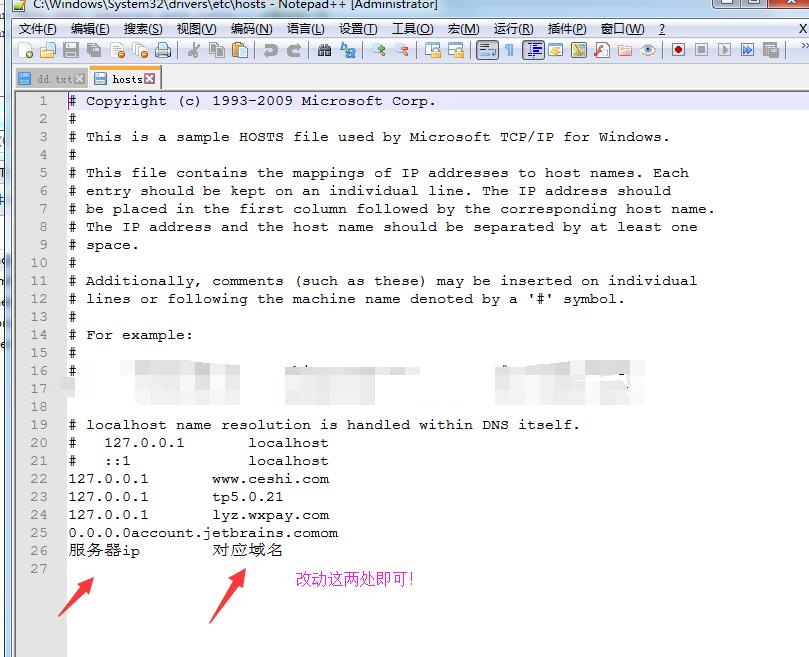1. 修改nginx的配置文件( 我的配置文件在/usr/local/nginx/conf/nginx.conf)
[root@xxx ~]# find / -iname nginx.conf
/usr/local/nginx/conf/nginx.conf
[root@xxx ~]# vim /usr/local/nginx/conf/nginx.conf
nginx.conf配置文件的大致结构:
...
http{
server{
... #一个server结构可以对应一个域名
}
include vhost/*.conf;
#增加这一句,以后所有新增的域名都可以放在/usr/local/nginx/conf/vhost/下,便于分开管理
}
2. 在/usr/local/nginx/conf/vhost/目录下,新增新域名的配置文件xincanzhe.conf(这边我要绑定一个www.xincanzhe.top的域名),复制nginx.conf中的server部分到xincanzhe.conf
server { listen 80; server_name www.xincanzhe.top; #新增域名名称 #charset koi8-r; access_log /data/wwwlogs/www.xincanzhe.top.log combined;
#设置访问该域名产生的日志文件,无需创建设置后会自动生成 location / { root /data/wwwroot/xincanzhe/public/; #域名指向的根目录 index index.html index.php index.htm; #隐藏index.php if (!-e $request_filename) { rewrite ^(.*)$ /index.php?s=/$1 last; break; } } #error_page 404 /404.html; # redirect server error pages to the static page /50x.html # error_page 500 502 503 504 /50x.html; location = /50x.html { root html; } # proxy the PHP scripts to Apache listening on 127.0.0.1:80 # #location ~ \.php$ { # proxy_pass http://127.0.0.1; #} # pass the PHP scripts to FastCGI server listening on 127.0.0.1:9000 # location ~ \.php$ { root /data/wwwroot/xincanzhe/public/; #域名指向的根目录 fastcgi_pass 127.0.0.1:9000; fastcgi_index index.php; #使Nginx支持pathinfo路由 fastcgi_split_path_info ^(.+\.php)(.*)$; #增加这一句 fastcgi_param PATH_INFO $fastcgi_path_info; #增加这一句 fastcgi_param SCRIPT_FILENAME $document_root$fastcgi_script_name; include fastcgi_params; } # deny access to .htaccess files, if Apache's document root # concurs with nginx's one # #location ~ /\.ht { # deny all; #} }
3. 如果需要再次新增域名,只需要在/usr/local/nginx/conf/vhost/新建一个配置文件即可。
4. 修改nginx配置文件记得语句后加上分号;
5. 如果配置的是虚拟域名,则还需要本地电脑上面配置信息
windows电脑找到C:\Windows\System32\drivers\etc\文件夹下面的hosts文件,修改保存之后即可在本地电脑访问域名为***的网站
